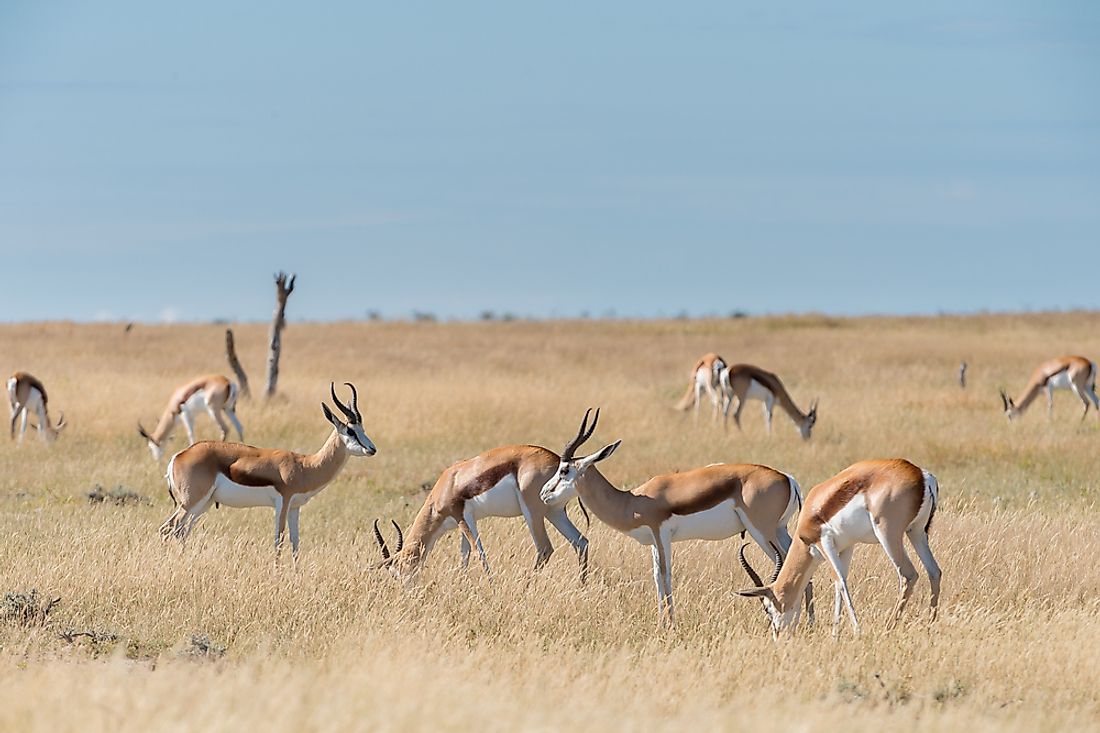What Are The Differences Between A Springbok And An Impala?

What Is A Springbok?
A springbok is a type of antelope that inhabits the southwestern and southern areas of Africa. It belongs to the Antidorcas genus and is further divided into 3 subspecies. This antelope species is primarily active during the early morning and early evening hours when they eat shrubs and succulent plants with the rest of their herd. Its conservation status is listed by the IUCN as of least concern, which means there is no immediate threat to its survival. In fact, records indicate that the springbok population size is growing.
What Is An Impala?
An impala is a type of antelope that inhabits the eastern and southern areas of Africa. It belongs to the Aepyceros genus and is further divided into 2 subspecies. This antelope species is primarily active during the day when it grazes on fruits and other vegetation with one of three types of herds: bachelor, female, or territorial male. Its conservation status is listed by the IUCN as of least concern. However, the black-faced subspecies has been listed as vulnerable. This subspecies has a population size of less than 1,000.
What Are The Differences Between Springboks And Impalas?
Besides the differences mentioned above, springboks and impalas have a number of other more distinct differences.
Size And Appearance
For example, the size and appearance of these species are different. Both sexes of the springbok grow to between 28 and 34 inches in height and 47 to 59 inches in length. It can weigh anywhere from 60 to 93 pounds and has a 5.5 to 11-inch tail. Its tail is distinguished by a black tuft of fur at the tip. Additionally, both sexes grow 14 to 20-inch long black, curved horns. Each of the subspecies has a different color, including: dark brown with a black side stripe, tan with a black side stripe, and white with a tan side stripe.
The impala, in contrast, has a difference in size based on sex. The male grows to between 30 and 36 inches in height, while the female grows to between 28 and 32 inches. The males weigh between 117 and 168 pounds and the female between 88 to 117 pounds. Unlike female springboks, female impalas do not grow horns. Male impalas grow 18 to 36-inch long dark, curled horns. Its coloration is a reddish brown on top with tan sides and hind legs and a white stomach.
Behavior
As previously mentioned, the springbok is active around sunrise and sunset, primarily in mixed sex herds. The springbok is recognized for its unique leaping style, called pronking. It can jump up to 6.6 feet into the air while bending its back, but not its legs. The springbok can also survive for years without consuming water as it obtains sufficient fluids from the vegetation (like succulents) that make up its diet. Its breeding season can happen during any time of the year.
The impala, active during the day, maintains one of three distinct herd types. Researchers believe this is the only antelope species to participate in allogrooming, which is grooming of other adults. The impala can jump up to 9.8 feet in the air and up to 33 feet in distance. Its breeding season occurs once a year for 3 weeks, usually in May.







